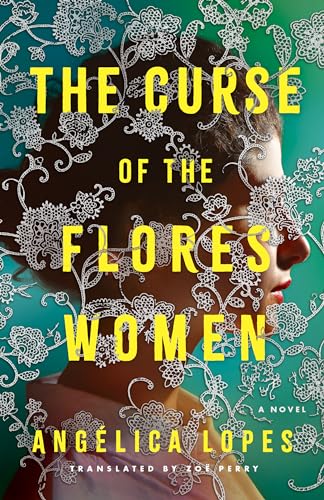The Curse of the Flores Women
What we love about historical fiction emerges in the opening pages of this novel: an intriguing location, unfamiliar circumstances, and vivid characters. Translated from the Portuguese, it focuses on lace makers in 1918-19 in a rural Brazilian village. They live in a house with a pretty garden, so they’re referred to as the Flores women and eventually take the name officially. Besides their flower garden and the lace-making that gives them an independent income, they’re notorious for a curse handed down from their great grandmother, Das Dores, by a gypsy whose man she married – all will be unlucky in love for seven generations. One way or another this proves true.
The Flores lace circle includes Inês, the daughter telling the story, and her blind younger sister, Cândida. Besides their mother and devout maiden aunt, the unrelated Victorina and Eugênie complete the circle. Inês’ friendship with her fellow teenager Eugênie intensifies the drama after Eugênie’s arranged marriage. In 2010, seven generations after Das Dores, Alice, an 18-year-old rebellious spirit, is given her ancestors’ heirloom lace veil and becomes involved in its story. Alice, who fights oppression herself, is fascinated by how her predecessors rebelled almost a century earlier, when women asserted their rights covertly, if at all.
Angélica Lopes’ dialogue and writing style keep our attention, and the book is full of charming details. For instance, Cândida “sees” through the birds that fly freely through their little house. Suspense is built around how the powers of church and patriarchy impact the women’s lives, sometimes to tragic effect. Making lace is a communal effort that takes on metaphorical significance here. Published by Amazon Publishing’s imprint for international novels and labeled as book club fiction, this highly recommended novel would prompt lively discussion.










